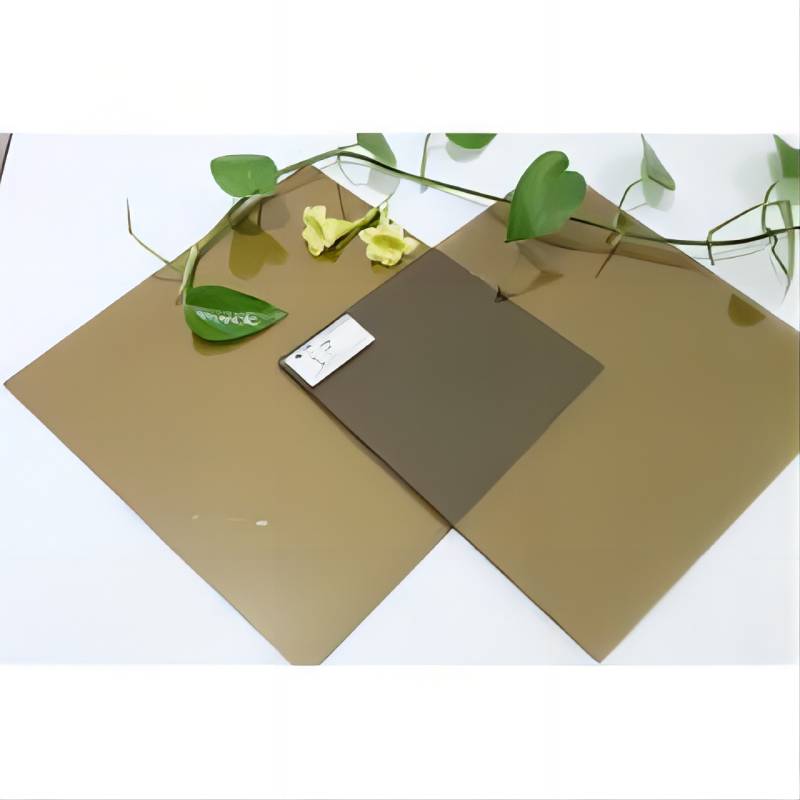The Dynamics of Raw Mirror Glass Prices An Overview
In today’s competitive market, understanding the pricing dynamics of raw materials is crucial for businesses and consumers alike. Among various materials, raw mirror glass holds a significant position due to its diverse applications in construction, automotive, interior design, and technology. This article delves into the factors influencing raw mirror glass prices, trends in the market, and projections for the future.
Understanding Raw Mirror Glass
Raw mirror glass is produced through a specialized process where glass is coated with a reflective material, typically silver or aluminum, on one side. This process transforms plain glass into a reflective surface that is essential for mirrors, optical instruments, and decorative applications. The quality and thickness of the glass, along with the type of coating used, are pivotal in determining the price points in the market.
Factors Affecting Price
1. Raw Material Costs The primary components of mirror glass include silica sand, soda ash, and limestone. Fluctuations in the price of these raw materials can directly impact the production cost of mirror glass. For example, an increase in silica sand prices due to supply chain disruptions or mining regulations can lead to higher mirror glass prices.
2. Production Processes The manufacturing process of mirror glass is energy-intensive. Thus, the cost of electricity and fuel can significantly alter pricing. Innovations in production technology that lead to energy savings could potentially lower prices, while rising energy costs could have the opposite effect.
3. Demand and Supply Dynamics The demand for raw mirror glass is inherently tied to various industries. For instance, the construction sector requires large amounts of mirror glass for facades, while automobiles use it for rearview and side mirrors. Trends such as urbanization and growing construction activities in emerging economies have spurred demand, influencing prices accordingly.
raw mirror glass price
4. Geopolitical Factors Global trade policies, tariffs, and geopolitical stability play a crucial role in the pricing landscape. For example, tariffs on imported glass materials can lead to higher costs for manufacturers, which are subsequently passed on to consumers. Additionally, political instability in production regions can disrupt the supply chain, contributing to price volatility.
5. Technological Advances Innovations in production techniques, such as the interlayer technology for safety and energy efficiency, are increasing the value of mirror glass. While this can lead to higher prices, it also creates a market segment for premium products that cater to consumers looking for advanced features.
Trends in the Market
Recent trends indicate a growing demand for eco-friendly and energy-efficient mirror glass products. Manufacturers are increasingly focusing on sustainable practices, which may lead to initial price hikes but can ultimately provide cost savings through energy efficiency. The use of low-emissivity coatings, which reduce heat loss, is becoming more common, reflecting consumer preferences for environmentally friendly options.
Moreover, the rise of online retail and direct-to-consumer sales channels has made it easier for consumers to compare prices and find cost-effective solutions. This digital shift is expected to foster competition among manufacturers, potentially stabilizing prices in the long run.
Future Projections
Looking ahead, several factors could dictate the trajectory of raw mirror glass prices. If global demand continues to rise, especially in developing nations, we may see sustained pressure on prices. Conversely, advancements in production efficiency and recycling technologies could mitigate some of these pressures, leading to more stable pricing.
In conclusion, the pricing of raw mirror glass is influenced by a complex interplay of raw material costs, production processes, demand trends, geopolitical factors, and technological advancements. Businesses and consumers must stay informed of these dynamics to navigate the market effectively. As sustainability becomes a priority, the evolution of mirror glass products will likely reshape the market landscape, adding further layers to the pricing structure and consumer behavior. Understanding these trends will be essential for stakeholders in this vibrant industry.
 Afrikaans
Afrikaans  Albanian
Albanian  Amharic
Amharic  Arabic
Arabic  Armenian
Armenian  Azerbaijani
Azerbaijani  Basque
Basque  Belarusian
Belarusian  Bengali
Bengali  Bosnian
Bosnian  Bulgarian
Bulgarian  Catalan
Catalan  Cebuano
Cebuano  Corsican
Corsican  Croatian
Croatian  Czech
Czech  Danish
Danish  Dutch
Dutch  English
English  Esperanto
Esperanto  Estonian
Estonian  Finnish
Finnish  French
French  Frisian
Frisian  Galician
Galician  Georgian
Georgian  German
German  Greek
Greek  Gujarati
Gujarati  Haitian Creole
Haitian Creole  hausa
hausa  hawaiian
hawaiian  Hebrew
Hebrew  Hindi
Hindi  Miao
Miao  Hungarian
Hungarian  Icelandic
Icelandic  igbo
igbo  Indonesian
Indonesian  irish
irish  Italian
Italian  Japanese
Japanese  Javanese
Javanese  Kannada
Kannada  kazakh
kazakh  Khmer
Khmer  Rwandese
Rwandese  Korean
Korean  Kurdish
Kurdish  Kyrgyz
Kyrgyz  Lao
Lao  Latin
Latin  Latvian
Latvian  Lithuanian
Lithuanian  Luxembourgish
Luxembourgish  Macedonian
Macedonian  Malgashi
Malgashi  Malay
Malay  Malayalam
Malayalam  Maltese
Maltese  Maori
Maori  Marathi
Marathi  Mongolian
Mongolian  Myanmar
Myanmar  Nepali
Nepali  Norwegian
Norwegian  Norwegian
Norwegian  Occitan
Occitan  Pashto
Pashto  Persian
Persian  Polish
Polish  Portuguese
Portuguese  Punjabi
Punjabi  Romanian
Romanian  Russian
Russian  Samoan
Samoan  Scottish Gaelic
Scottish Gaelic  Serbian
Serbian  Sesotho
Sesotho  Shona
Shona  Sindhi
Sindhi  Sinhala
Sinhala  Slovak
Slovak  Slovenian
Slovenian  Somali
Somali  Spanish
Spanish  Sundanese
Sundanese  Swahili
Swahili  Swedish
Swedish  Tagalog
Tagalog  Tajik
Tajik  Tamil
Tamil  Tatar
Tatar  Telugu
Telugu  Thai
Thai  Turkish
Turkish  Turkmen
Turkmen  Ukrainian
Ukrainian  Urdu
Urdu  Uighur
Uighur  Uzbek
Uzbek  Vietnamese
Vietnamese  Welsh
Welsh  Bantu
Bantu  Yiddish
Yiddish  Yoruba
Yoruba  Zulu
Zulu 

